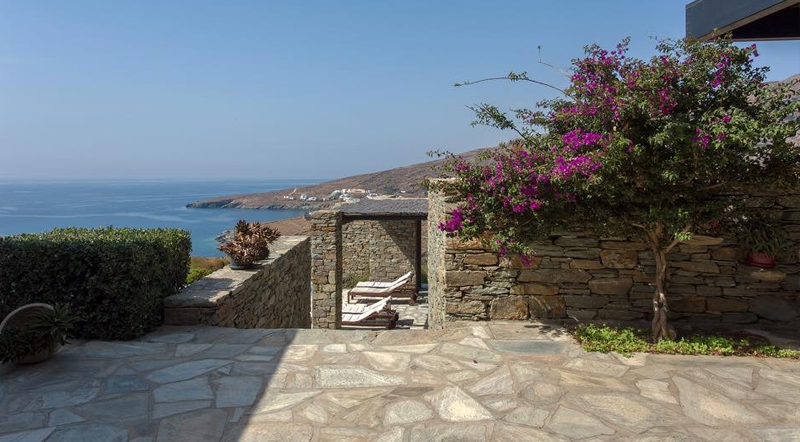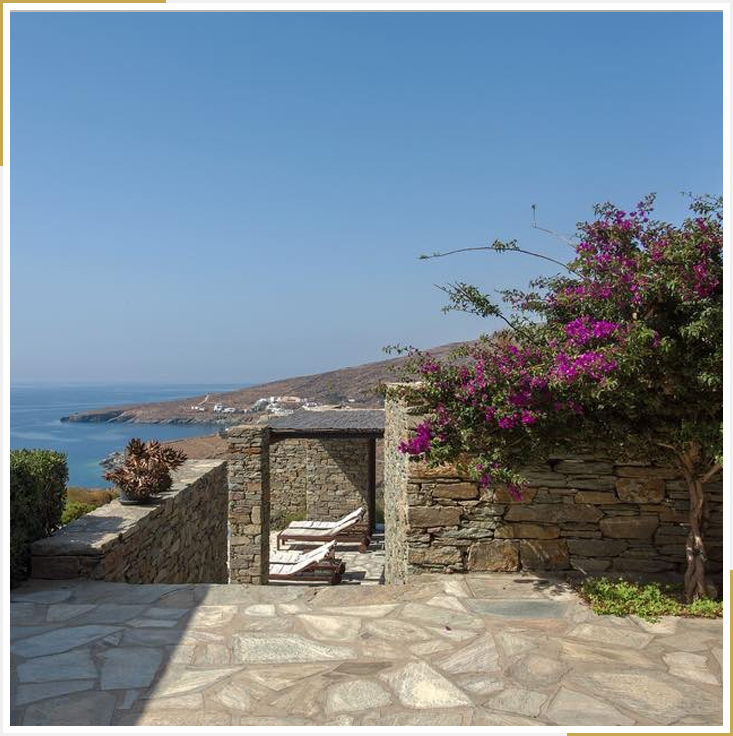

The Tinian stones

The stonework, these stone retaining walls that hold the islands in the islands, the paddocks and fences that divide property and follow the cobbled streets, even the stables, warehouses and mills, built for centuries on the Ionian Islands, In the Aegean, but also in mainland Greece, only with stone, without any bonding material - such as cement or mud - to bind them together, they are not only aesthetically excellent but vital to their places and inhabitants.
How would our islands be without rocks? Barren massifs, parts ripped from the air, unfeeling to man and his activities. It's not an exaggeration. "The soil in the islands is a little bit downhill," says folk painter Alekos Florakis, who works at the Piraeus Group Cultural Center's Marble Museum of Art that operates on the Tinos Tower.
"If there were no terraces or troughs, as we say here, it would be impossible for the local population to survive." In Tinos, there is no mountain without the lacy stone formations. What we call a Greek island consists not only of brown soil and blue sea but mainly of stones. Stones adorned by man, placed in order and harmony with one another, wedged together or without, bound together by the laws of equilibrium and gravity, stand eternal keepers. They create asymmetric geometric shapes, impose their own landscape architecture, twist, ascend, following the terrain.
Throughout their wanderings they insist on circular and derivative shapes and avoid the absolute straight lines and rigid lines of modern agricultural production units. This is one of their special features. The lack of bonding material, at the same time, enables them to adapt to the pressure of soil and water, causing deformation. As if they were life changing shapes and lines depending on the circumstances. At the same time, if for some reason they are damaged at one point, they do not fall completely or require complete wall restoration, as with cement. We are actually talking about small architectural "wonders" that unfortunately are lost over the years along with the removal of islanders from the primary sector and the abandonment of the countryside.
A few decades ago, the restoration of dry stone support was part of the farmers' annual routine. Mr. Yiannis Psaltis, president of the Environmental Association "Friends of the Green" in Tinos, recalls: "In October, when we didn't have a lot of agricultural work, my father used to gather the whole family to make popcorn or popcorn. the broken pieces of scrap stone in the Thaian local. "
Today the poplars are much more than the so-called "dry" stones. The technique followed by the era of prehistoric times and whose preservation is not only useful, but a major cultural issue, is lost. The concern that we no longer need to produce local produce or hold our own water because we can buy it from both parties, and the State's complete indifference to their salvation, has turned the rubble into ruins. So today, tons of water and fertile soil are lost every year at sea, as the islands gold-fill their food and beg for a bit of brackish water that comes with the aquifer ...
Three Reasons Why It Is Valuable!
1. It holds soil and allows it to grow in areas that otherwise would only grow phrygans and thorns - unless they were completely bare of vegetation because of the winds. With stone, man was able to create the conditions that would allow him to survive in difficult climatic conditions and in unfriendly soils. The Aegean islands are a prime example of why the sea may have been the main male occupation for the islanders, but the remaining had to provide food all year round and perhaps boost their incomes when possible. Remember that the transportation of goods was not as widespread as it is today and the basic condition for survival was self-sufficiency in food. The drywall transformed the sloping terrain into planes and thus created arable land. On the terraces or terraces these islanders cultivated almost everything. Vegetables, wheat, legumes, elsewhere, vineyards and figs, and even almond trees in the Ionian Islands that the climate allows. Santorini dried tomatoes, anhydrous eggplants, carrot, green beans are some of the most popular products of the islands. Even the islanders were able to cultivate in their fields with the proper use of stone.
2. Hold the rain water by doing a double task. On the one hand it does not allow the fertile soil to erode and drift into the sea and on the other it holds back the precious water that will eventually end up in torrents, after first having the soil well watered. According to the traditional way of building the terraces in Tinos, the farmers made a slope to the ground inland and about one meter before the next scrub opened a groove. "That would be the surplus of water - that is, the surplus water after it had achieved all the sedimentation it could achieve," says Matthew Matthew, a Tinos agronomist. "This groove was called a ravine because it led water to the adjacent stone canal path and from there to the stream, where they had built small dams, with timber and mud inside, to contain the surplus winter water for summer crops." A life cycle that is perpetuated with the help of stone, human intelligence and technique.
3. They are a refuge for wildlife, if we focus solely on their role as networks that provide favorable living conditions for both the fauna and flora of the area. In their cavities we find many species of lichens that later allow for the establishment of higher species, and we also find numerous species of plants and animals. There are plants growing such as amaranth, soap grass, and depending on the climate and distance from the sea, vines and figs can be found. These habitats are also frequented by various species of lizards, snakes, and snails, and many insects such as our ladybirds pass through the slits in winter.
This is where the various stages of butterfly transformation take place, the spiders find their food and in the large cavities we can find hedgehogs, rodents and even birds. An entire habitat is preserved among the rocks and protected there by the hot summer sun.
Source: www.tinos360.gr